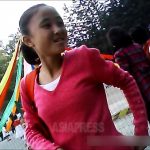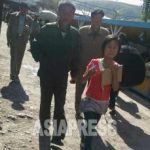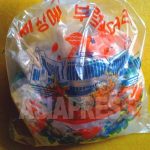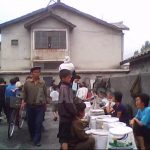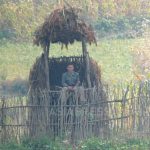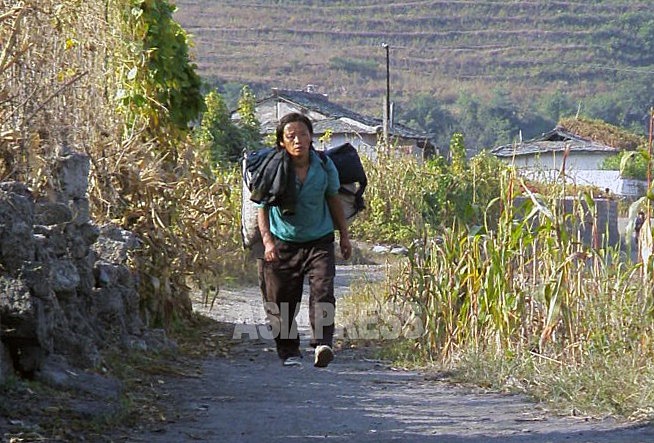
North Korea finished its harvest of wheat and barley in the northern regions of the country in mid-July. However, discontent among farmers at collective farms is growing because the harvested crops are being sent to the military on orders from the government instead of being distributed to farmers. (KANG Ji-won / ISHIMARU Jiro)
A reporting partner living in a city in North Hamgyung Province went to investigate the situation at a collective farm in the province in mid-July. The collective farm has around 500 employees and mainly cultivates corn. The farm is slightly on the small side relative to other farms in the province.
Kim Jong-un ordered the start of cultivation of wheat and barley in 2022, and the farm started a test crop of the grains last year. The crop yield was poor; nonetheless, wheat and barley farming received good reviews from farmers because they required less fertilizer than corn and could be harvested earlier than corn.
The reporting partner told ASIAPRESS that the farm devoted a small amount of land to wheat and barley farming this year as well, and that the crop yield was 800 to 1,000 kilograms per jongbo (approximately equal to one hectare). The reporting partner was unable to confirm exactly how much land was devoted to wheat and barley farming on the farm.
◆ Government orders harvested wheat and barley to be given to military
The reporting partner told ASIAPRESS that the farm is not allowed to use the harvested wheat and barley crops, which has caused a problem among farmers. He explained that “the harvested barley was all sent to the Rural Management Committee in the city for use by the military. This is the barley hump season, which means farming communities don’t have enough food and there are a lot of food-short households. Farmers are really unhappy because they received none of the harvest that they had expected.
Some sub-work unit leaders were caught distributing wheat and barley to food-short families during the threshing process and called in to answer for their actions by the authorities. The authorities have handed down repeated orders to farms for them to stop handling the harvest crops by themselves.”
※ The “barley hump” is a period when food is in short supply and people must wait until the corn harvest in August to September for fresh supplies of food. This period sees food shortages in farming areas.
※ Food-short households refer to families that have no food (and/or cash) on hand.
※ Sub-work teams are the lowest-level production units at North Korean farms and are usually made up of 10 people.
The collective farm has had two brigades of soldiers stationed there since the spring to provide farming support and security. The soldiers are using the harvested wheat and barley for their meals, the reporting partner said.
◆ Wheat and barley circulates in markets
Despite the government’s tightened management over harvested crops, wheat and barley are still making it into markets. A reporting partner in Hyesan, Yanggang Province, told ASIAPRESS that, based on a survey conducted on July 21, domestically grown whole wheat is selling for 3,700 North Korean won (around 580 South Korean won) per kilogram at a local market. Russian-grown whole wheat is also being sold at the same price in the market. This suggests that management over harvested wheat and barley varies depending on the region and collective farm.
※ ASIAPRESS communicates with its reporting partners through Chinese cell phones smuggled into North Korea.
- <Photo Report> A visit to a North Korea-China trade hub…Freight trucks line up to head into North Korea, but drivers not allowed to leave vehicles
- Interview About Conditions Inside North Korea Pt.2 -What people think about the satellite launch-
- Interview About Conditions Inside North Korea Pt.1 -Is it true that people have died of starvation?-
ASIAPRESS asks a Chinese businessman how North Korean business is doing: “North Korean labor is of more interest than trade” - <Inside N. Korea> Regime demands provincial party cadres to write self-criticisms regarding failure to social chaos, including starvation deaths
